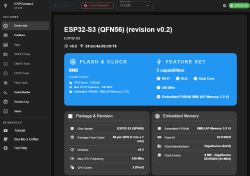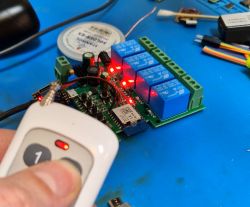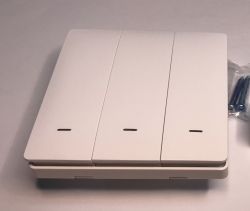Hi. I have got involved in a project at university about IoT. It is to involve sensing conventional machines and uploading data to a server using an ESP8266 Node MCU v3. The uploading of data to the server itself is trivial, but the problem arises when it comes to collecting data from the machines.
When it comes to temperatures, there is no problem here. A K-type thermocouple + Max31850 1-wire is enough for me to read temperatures up to 1200 degrees (I measure temperatures in ovens)
I have a problem when it comes to measuring displacements. My instructor came up with the idea that the measurement must be very accurate (0.1mm). In this case, only a linear encoder (preferably absolute) comes into play. The problem is that any encoders I find on the web require a minimum of 10V power supply, and my board runs on 3.3V (it has a 5V output powered from usb, but the logic runs on 3.3). I'm wondering if this can be jumped around somehow.
I found, for example, such an encoder LIKA SMAX-MB-PRG-L2
You can communicate with it via Modbus protocol via RS-485.
I would use a ready-made converter to switch from RS-485 to UART (for ESP8266).
The only problem is the unfortunate supply voltage. The encoder requires 10V. This may seem silly, but I would ask: what would happen if I connected a separate power supply to the sensor than to the board, of, say, 10V, and then used some sort of voltage divider for the logic?
Anyone have an idea how this problem could be solved?
When it comes to temperatures, there is no problem here. A K-type thermocouple + Max31850 1-wire is enough for me to read temperatures up to 1200 degrees (I measure temperatures in ovens)
I have a problem when it comes to measuring displacements. My instructor came up with the idea that the measurement must be very accurate (0.1mm). In this case, only a linear encoder (preferably absolute) comes into play. The problem is that any encoders I find on the web require a minimum of 10V power supply, and my board runs on 3.3V (it has a 5V output powered from usb, but the logic runs on 3.3). I'm wondering if this can be jumped around somehow.
I found, for example, such an encoder LIKA SMAX-MB-PRG-L2
You can communicate with it via Modbus protocol via RS-485.
I would use a ready-made converter to switch from RS-485 to UART (for ESP8266).
The only problem is the unfortunate supply voltage. The encoder requires 10V. This may seem silly, but I would ask: what would happen if I connected a separate power supply to the sensor than to the board, of, say, 10V, and then used some sort of voltage divider for the logic?
Anyone have an idea how this problem could be solved?







